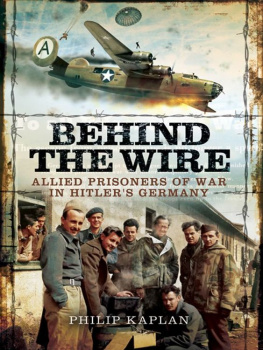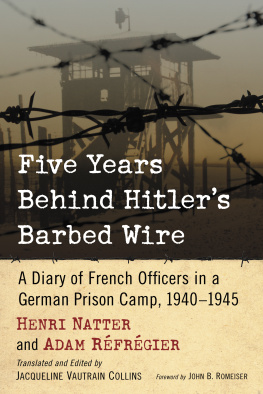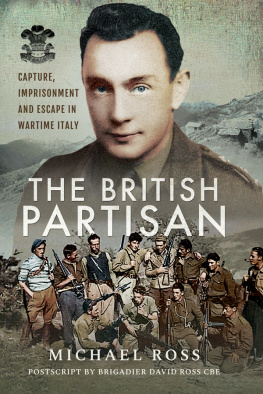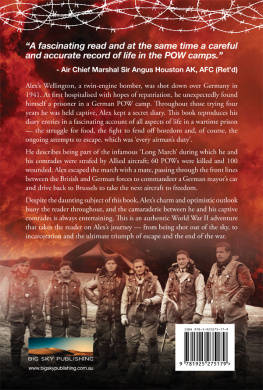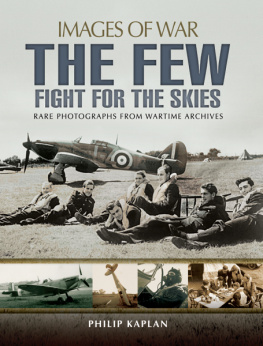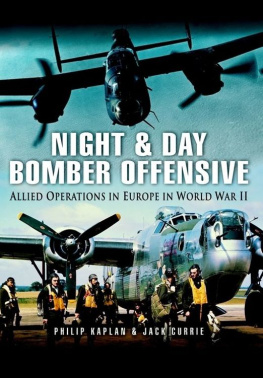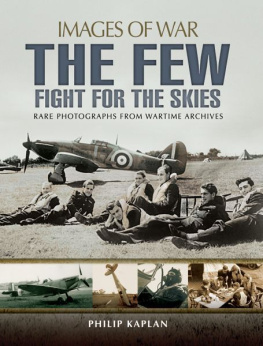
First published in Great Britain in 2012 by
PEN & SWORD AVIATION
An imprint of
Pen & Sword Books Ltd
47 Church Street
Barnsley
South Yorkshire
S70 2AS
Copyright Philip Kaplan and Jack Currie, 2012
ISBN 978 1 78159 044 7
eISBN 978 1 78337 806 7
The right of Philip Kaplan and Jack Currie to be identified as Authors of this work has been asserted by them in accordance with the Copyright, Designs and Patents Act 1988.
A CIP catalogue record for this book is
available from the British Library
All rights reserved. No part of this book may be reproduced or transmitted in any form or by any means, electronic or mechanical including photocopying, recording or by any information storage and retrieval system, without permission from the Publisher in writing.
Printed and bound in England
By CPI Group (UK) Ltd, Croydon, CR0 4YY
Pen & Sword Books Ltd incorporates the Imprints of Pen & Sword Aviation,
Pen & Sword Family History, Pen & Sword Maritime, Pen & Sword Military,
Pen & Sword Discovery, Pen & Sword Politics, Pen & Sword Atlas,
Pen & Sword Archaeology, Wharncliffe Local History, Wharncliffe True Crime,
Wharncliffe Transport, Pen & Sword Select, Pen & Sword Military Classics,
Leo Cooper, The Praetorian Press, Claymore Press, Remember When,
Seaforth Publishing and Frontline Publishing
For a complete list of Pen & Sword titles please contact
PEN & SWORD BOOKS LIMITED
47 Church Street, Barnsley, South Yorkshire, S70 2AS, England
E-mail: enquiries@pen-and-sword.co.uk
Website: www.pen-and-sword.co.uk
CONTENTS
ACKNOWLEDGEMENTS
The authors are grateful to the following people for their kind assistance and contributions in the development of this book: Don Ackerson, Roger Armstrong, George Behling, Quentin Bland, Bob Braham, May Butcher, Douglas Connolly, Luther Cox, Aidan Crawley, Albert Clark, Kate Currie, Bob Doherty, James Doolittle, Han Geurts, Bill Harvey, Larry Hewin, John Hurd, Charles Johnson, Burton Joseph, Claire Kaplan, Joseph Kaplan, Neal Kaplan, Frank Kautzmann, Walter Konantz, Eric Lapham, Robert Long, Frank Madrid, Barry Mahon, Walker Mahurin, Eric Marsden, Margaret Mayhew, William McCarran, Bob Neary, Merle Olmsted, Geoffrey Page, Duane Reed, Kenneth Simmons, Dale Smith, Bobby Stark, Peter Townsend, John Vietor, Don Walsh, Chuck Yeager, Hubert Zemke.
Particular thanks to author / historian Arthur A. Durand for the kind, generous permission to quote from Stalag Luft III, his superb and masterly recreation of virtually every aspect of the daily prison experience and a testament to the prisoners ingenuity, perseverance, and raw courage against monumental odds.
INTRODUCTION
The vilest deeds like poison weeds
Bloom well in prison air:
It is only what is good in Man
That wastes and withers there:
Pale anguish keeps the heavy gate,
And the warder is Despair.
Oscar Wilde
We were not heroes but we did our best, in unique circumstances, to continue the war and to come home with honor.
General Albert P. Clark
Most of the many American and British airmen who were brought down in European skies during World War II to become prisoners of the Germans fell into three distinct categories. The first were those who thought only of escape. They dedicated themselves to getting over, or under, the wire to freedom and rejoining their units in England, Italy, or North Africa. They spent nearly all of their time plotting, planning, and preparing for their own escape attempts and for those of their fellow prisoners. The idea of breaking out sustained and motivated them for the duration of their captivity.
Another group of prisoners had an entirely different attitude about their situation. Shrouded in bitterness at their fate, they retreated into depression, turned inward and took little part in any camp activities. They lay in their bunks and read or faced the wall, brooding about the injustice of their circumstance. They achieved little during their captivity and contributed even less to the well being of their comrades. Many suffered excessively and needlessly for their self-imposed isolation.
Finally, there were those who were quick to make the mental adjustment, who resolved to understand and come to terms with their new circumstance in the best, most productive and worthwhile ways they could. They soon evaluated the situation and, while struggling with the same everyday problems as their fellow kriegies, the German nickname for Allied prisoners of war, they simply got on with it. They repaired sanitation facilities, washhouses and latrines; improvised to supplement their limited cooking capacity, and worked to significantly improve the camp medical services. They built recreational sites, theaters and other camp facilities. They reasoned that they were stuck in a situation for the duration of the war and they set out to make something of their lot, to find opportunities and exploit them to the fullest. They were high achievers, many of them leaders and people of considerable skill and talent who used their gifts to advance their cause and that of their fellows. Their motivation, determination and guts got them through the captivity. Many matured greatly and actually gained something from the experience.
All prisons are brimming over with innocence.
It is those who cram their fellows into them,
in the name of empty ideas,
who are the only guilty ones.
Jean Anouilh
PROLOGUE
THE AIR over Debden, England, the home base of the 4th Fighter Group, Eighth US Army Air Force, on the afternoon of 13th April 1944 was full of excitement. The Fourths leading ace, Captain Don Gentile, celebrated the completion of his tour of duty by beating up the airfield in a low pass that was to be the last flying moment for his legendary P-5 1 Mustang, Shangri-La . The plane struck the ground and, with its airframe broken, became a write-off. Captain Gentile was unhurt in the incident. A few hundred miles away at about the same time, in the skies over Belgium, another Eighth Air Force airplane, a B-17 Flying Fortress called The Royal Flush , of the 384th Bomb Group (H) which was based at Grafton Underwood in Northamptonshire, was also falling out of the sky.
Twenty-one-year-old Charles W. Johnson of Louisville, Kentucky, was the right waist gunner on The Royal Flush that spring day. He remembered his experience like this:
Our target that day was the ball-bearing works at Schweinfurt. Shortly before reaching the target, we were hit head-on by a swarm of ME 109s. Six of our (384BG) B-17s were shot down. We regrouped and hit our target. Two more B-17s that were badly shot up had to crash-land in France on their return trip. The remaining 13 bombers of our group were about 12 minutes from the Channel when I saw the first two bursts of flak heading our way. One of them got us between the number two engine and the cockpit. According to Dewayne Bennett, a friend of mine who was aboard a B-17 off to our left in the formation, our left wing folded over the fuselage and then the plane exploded into a huge fireball. He had no choice but to fly through the junk of our plane. He thought it a miracle that they made it through unscathed.
When we got hit I was thrown down on the floor and pinned there. I managed to roll on my side and clamp one buckle of my chute to my harness. I was passing out. My last thought was: This is a hell of a way to die. I remember that the plane seemed to sort of shudder, which I later assumed was the explosion. When I came to, my body was in a reclining position and everything was so quiet and peaceful. I realized I was falling and pulled my rip-cord. I immediately thought about my other snap, but everything held. When the chute opened I had a sharp pain in my right leg and when I looked down to see if I still had a right leg, I saw the ground meeting me.
Next page
